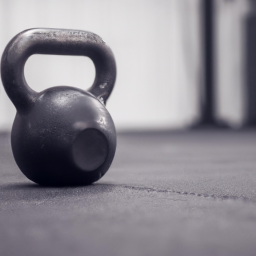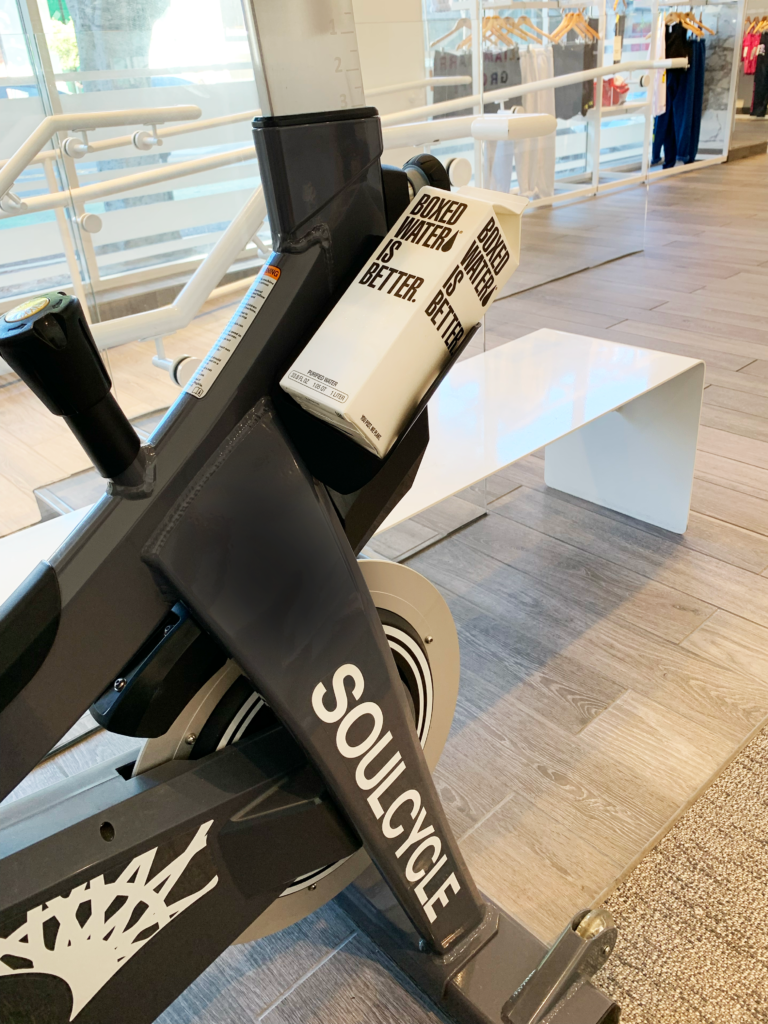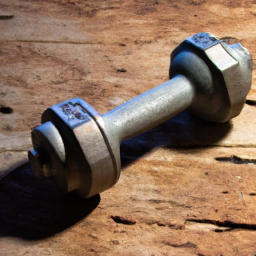So you’re curious about CrossFit workouts, huh? Well, you’ve come to the right place! Allow me to demystify the world of CrossFit and give you a glimpse of what to expect when you jump into this exhilarating fitness method.
When you start CrossFit, prepare yourself for a combination of various exercises and movements that will challenge your body and mind. From intense cardio workouts to weightlifting sessions, every day at the CrossFit box (that’s what we call the gym) is a unique experience. You’ll work on your strength, stamina, agility, and coordination through a mix of functional movements like squats, deadlifts, pull-ups, and more. But don’t worry, everyone starts somewhere, and CrossFit is all about scaling exercises to your own fitness level. So whether you’re a novice or a seasoned athlete, there’s a place for you to get started and progress in the world of CrossFit. So lace up your sneakers, bring your determination, and be ready to challenge yourself like never before!
Understanding CrossFit Workouts
What is CrossFit?
CrossFit is a high-intensity fitness program that combines elements of weightlifting, cardio, and bodyweight exercises. It is known for its constantly varied workouts that target multiple muscle groups and improve overall fitness levels.
History of CrossFit
CrossFit was developed in the early 2000s by Greg Glassman. It started as a fitness program used by military personnel, law enforcement officers, and firefighters to improve their physical performance. Over the years, CrossFit gained popularity among individuals looking for a challenging and effective workout regimen.
Key Principles of CrossFit
CrossFit is built on several principles that set it apart from traditional fitness programs. These include:
-
Constantly varied workouts: CrossFit workouts are designed to be different every day, incorporating a wide variety of exercises to challenge the body in different ways.
-
Functional movements: CrossFit prioritizes movements that mimic real-life activities, such as squatting, lifting, and pushing, to improve overall strength and mobility.
-
High intensity: CrossFit workouts are typically performed at a high intensity level, pushing participants to their limits and promoting maximum effort.
-
Community and support: CrossFit places a strong emphasis on fostering a supportive community of like-minded individuals who motivate and encourage each other throughout their fitness journey.
Benefits of CrossFit
Improved fitness levels
One of the main benefits of CrossFit is improved overall fitness levels. The combination of cardio, strength training, and functional movements helps to improve cardiovascular endurance, muscular strength, flexibility, and agility.
Increased strength and endurance
CrossFit workouts focus on compound movements and heavy lifting, which can lead to significant improvements in strength. Additionally, the high-intensity nature of the workouts helps to increase muscular endurance, allowing participants to perform physical tasks for longer periods without fatigue.
Weight loss and body composition
Due to the intensity and variety of CrossFit workouts, they are highly effective for weight loss and improving body composition. The combination of cardiovascular exercise and strength training helps to burn calories and build lean muscle mass, leading to a decrease in body fat percentage.
Community and support
One of the unique aspects of CrossFit is the strong sense of community it creates. Working out in a group setting and having the support of fellow participants can provide motivation, accountability, and a sense of belonging.
Preparing for CrossFit
Consulting with a healthcare professional
Before starting CrossFit or any physical fitness program, it is essential to consult with a healthcare professional, especially if you have any underlying medical conditions or injuries. They can provide guidance on whether CrossFit is appropriate for you and give you any necessary modifications or precautions to consider.
Fitness level assessment
It is important to assess your current fitness level before diving into CrossFit workouts. This can be done through a fitness test, which may include exercises such as running, push-ups, squats, and a timed rowing test. Understanding your current abilities will help you gauge your progress and set realistic goals.
Finding a reputable CrossFit gym
To ensure a safe and effective CrossFit experience, it is crucial to find a reputable CrossFit gym with experienced coaches. Look for gyms that prioritize proper technique, provide modifications for different fitness levels, and create a supportive and inclusive environment.
What to Expect in a CrossFit Workout
High-intensity functional movements
CrossFit workouts typically involve a combination of functional movements, such as squats, lunges, deadlifts, kettlebell swings, and pull-ups. These exercises work multiple muscle groups and mimic real-life movements.
Varied and constantly changing exercises
One of the defining characteristics of CrossFit is the constantly varied nature of the workouts. Each day, you can expect different exercises and combinations, keeping your workouts fresh and challenging. This variety helps prevent boredom and ensures that your body continues to adapt and improve.
Time-based workouts
CrossFit workouts are often structured as timed workouts or AMRAPs (as many rounds/reps as possible) within a set time frame. This encourages participants to push themselves to complete as many rounds or repetitions as possible within the given time, fostering a sense of competition and motivation.
Scaling and modifications
CrossFit workouts can be scaled or modified to accommodate different fitness levels or physical limitations. Coaches are trained to provide modifications for beginners or individuals with injuries, ensuring that workouts can be tailored to individual needs while still providing a challenging experience.
Common CrossFit Exercises
Squats
Squats are a fundamental movement in CrossFit and are essential for building lower body strength, particularly in the quadriceps, glutes, and hamstrings. Squat variations, such as front squats, overhead squats, and pistol squats, are often incorporated into CrossFit workouts to target different muscle groups and challenge stability.
Deadlifts
Deadlifts are a compound exercise that primarily targets the posterior chain, including the glutes, hamstrings, and lower back. It is a fundamental movement for developing overall strength and power.
Push-ups
Push-ups are a bodyweight exercise that targets the upper body muscles, including the chest, shoulders, and triceps. They can be modified to different difficulty levels, making them suitable for all fitness levels.
Burpees
Burpees are a full-body exercise that combines a squat, plank, push-up, and jump. They are highly effective for developing cardiovascular endurance, strength, and explosiveness.
Kettlebell swings
Kettlebell swings are a dynamic exercise that targets the posterior chain, including the glutes, hamstrings, and lower back. They improve hip mobility, explosive power, and cardiovascular endurance.
Tips for Getting Started
Start slow and listen to your body
When starting CrossFit, it is important to listen to your body and start at a pace that feels comfortable for you. Take breaks as needed, and gradually increase the intensity and duration of your workouts to avoid overexertion and reduce the risk of injury.
Focus on proper form and technique
Proper form and technique are essential in CrossFit to ensure effective and safe workouts. Learning and practicing the correct form for each exercise will help you engage the right muscles and prevent injuries.
Use appropriate weights and modify as needed
Start with lighter weights and gradually increase the load as your strength and technique improve. It’s better to focus on quality over quantity and choose weights that challenge you without compromising form.
Learn from experienced coaches and members
Take advantage of the experience and knowledge of the coaches and more experienced members in your CrossFit gym. They can provide guidance, offer tips, and help you progress in your fitness journey.
Avoiding Common Injuries
Warm-up and cool-down properly
Proper warm-up and cool-down routines are essential for injury prevention in CrossFit. They help to prepare the muscles and joints for the workout and promote recovery post-workout. Incorporate dynamic stretches and mobility exercises into your warm-up and static stretches into your cool-down.
Gradual progression and avoiding overtraining
Gradually progress the intensity, duration, and load of your workouts to avoid overtraining and minimize the risk of injury. Allow your body time to recover and rest between workouts, and listen to any signs of pain or excessive fatigue.
Using the right equipment and gear
Using the proper equipment and gear is crucial for injury prevention in CrossFit. Invest in supportive footwear, wrist wraps, knee sleeves, and other protective gear as needed to provide stability and reduce the risk of strains or sprains.
Staying Motivated in CrossFit
Setting realistic goals
Setting realistic and achievable goals can help maintain motivation in CrossFit. Break down your ultimate fitness goals into smaller milestones, and celebrate each achievement along the way. This will keep you motivated and engaged in your workouts.
Tracking progress and celebrating milestones
Tracking your progress is essential in CrossFit. Keep a workout journal, record your personal bests, and take measurements of your body composition. Celebrate your milestones, whether it’s hitting a new PR (personal record) or losing a certain amount of weight.
Finding a workout buddy or support group
Having a workout buddy or joining a support group can provide additional motivation and accountability in your CrossFit journey. Surrounding yourself with like-minded individuals who share your goals and are supportive can make the experience more enjoyable and help you stay committed.
Trying new workouts and challenges
Keep your CrossFit experience exciting and fresh by trying new workouts and challenges. Participate in CrossFit competitions, sign up for specialty classes or workshops, and explore different training modalities. This will help prevent boredom and continuously challenge you.
Nutrition for CrossFit Athletes
Balanced macronutrients
Nutrition plays a vital role in supporting CrossFit workouts and overall performance. Aim for a balanced diet that includes adequate protein, carbohydrates, and healthy fats to provide energy, support muscle growth and repair, and aid in recovery.
Adequate hydration
Hydration is crucial for optimal performance in CrossFit. Drink sufficient water before, during, and after workouts to maintain proper hydration levels. Consider electrolyte replacements for longer or more intense workouts.
Pre- and post-workout nutrition
Fueling your body appropriately before and after CrossFit workouts is essential. Prioritize consuming a combination of carbohydrates and protein before your workout to provide energy and aid in recovery. After your workout, focus on consuming protein and carbohydrates to support muscle repair and glycogen replenishment.
Supplement considerations
While supplements are not necessary to succeed in CrossFit, they can complement a well-balanced diet. Consider supplements such as protein powders, amino acids, and fish oil to support your training and recovery. Consult with a healthcare professional or registered dietitian before adding any supplements to your regimen.
Incorporating CrossFit into Your Lifestyle
Scheduling and time management
Incorporating CrossFit into your lifestyle requires effective scheduling and time management. Dedicate specific times in your weekly schedule for workouts, allowing for flexibility when needed. Prioritize your fitness goals and make them a non-negotiable part of your routine.
Applying CrossFit principles in daily tasks
The functional movements and principles of CrossFit can be applied to daily tasks, such as lifting grocery bags, carrying furniture, or climbing stairs. Use proper form and engage your muscles, recognizing the opportunity to strengthen your body outside of the gym.
Recovery and rest days
Recovery is just as important as the workouts themselves. Incorporate rest days into your training schedule to allow your body time to repair and recharge. Prioritize activities such as foam rolling, yoga, or stretching to promote recovery and prevent burnout.
By understanding what to expect in a CrossFit workout, preparing your body and mind, and adopting a healthy and sustainable approach, you can embark on a rewarding journey towards improved fitness, strength, and overall well-being. Remember to always listen to your body, work at your own pace, and enjoy the process of challenging yourself and pushing your limits in a supportive and motivating CrossFit community.





